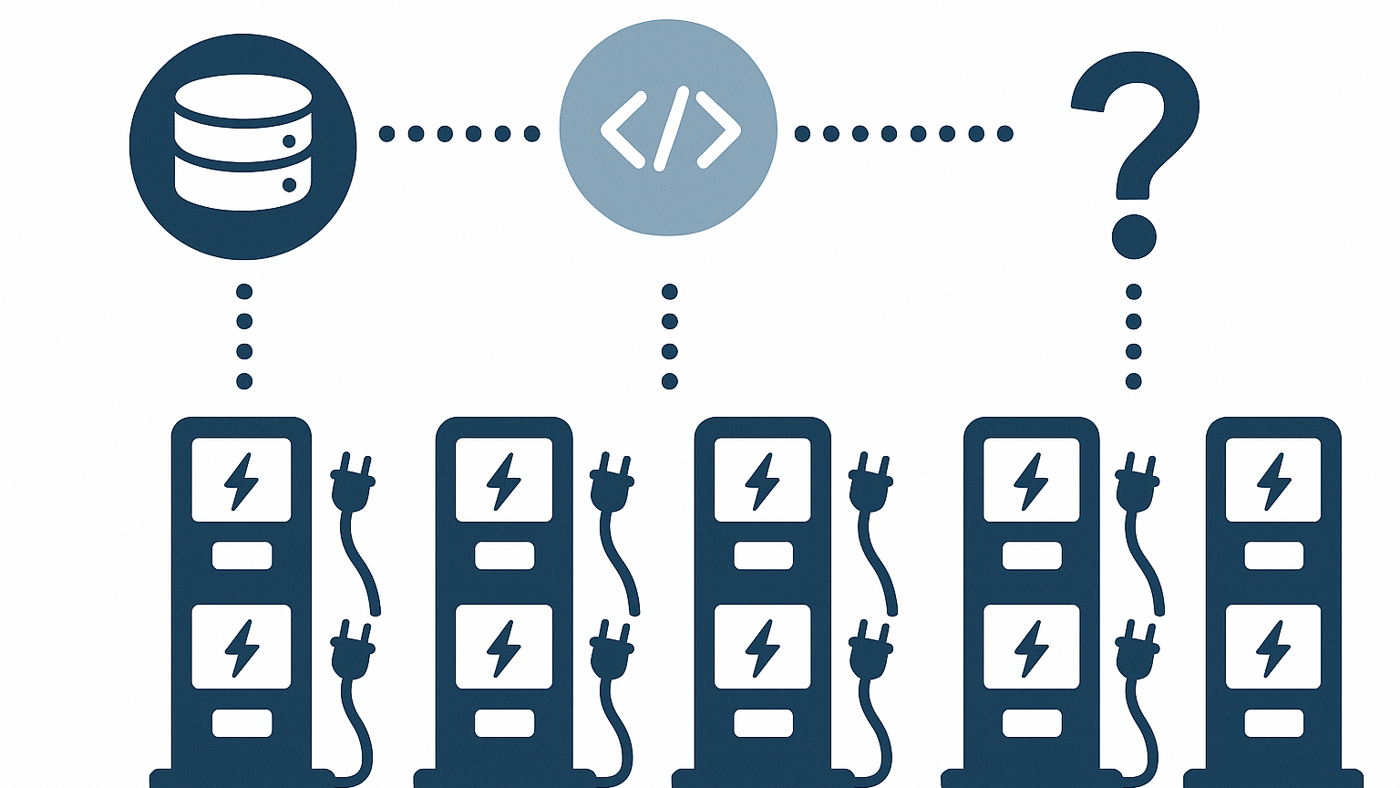
OCPP vs. Proprietary Protocols: Understanding the Real Differences in EV Charging
OCPP vs. Proprietary Protocols – Why It Matters More Than Ever
It’s been great to see awareness and understanding of the Open Charge Point Protocol (OCPP) grow over the years I’ve been involved in the EV charging space.
When I first started, the UK market was dominated by just a few players—Pod Point (now EDF), Chargemaster (now BP Pulse), and Rolec (who only offered “dumb” chargers at the time). Back then, the idea of a universal, open communication standard across multiple charge point manufacturers felt like a distant goal.
Fast forward to today, and most charge point owners—especially in the public sector—fully appreciate the advantages of OCPP. It’s now widely understood that OCPP allows local authorities and other asset owners to avoid being locked into a single manufacturer. This enables open-market tenders for each new site, helping drive down costs through competition and reducing the long-term risks of vendor lock-in.
Even more importantly, on the software side, OCPP means that if your current Charge Point Management System (CPMS) provider fails to meet expectations—whether due to rising costs, poor service, or lack of innovation—you can switch to another platform without replacing the hardware. That flexibility is critical for public sector procurement, which is why OCPP compliance is now a standard requirement in nearly all government tenders.
But this raises an important question:
Does stating “OCPP compliant” actually guarantee openness?
The answer, unfortunately, is no—not always. There are different types of OCPP implementations, and understanding the differences is crucial to avoiding hidden lock-ins.
1. Direct OCPP
This is the gold standard.
In a Direct OCPP setup, the charge point connects directly to a third-party CPMS of your choosing. The owner has full control over who manages the infrastructure, with all the flexibility OCPP was designed to provide. This is the most transparent and interoperable approach—enabling true hardware and software separation.
2. Pass-Through OCPP
An increasingly common but problematic model.
In this case, the charge point first communicates with the manufacturer’s own cloud platform—either via OCPP or a proprietary protocol—and then passes data on to the chosen CPMS via OCPP. On paper, it looks OCPP-compliant, but the owner is not in full control.
The issues here include:
• If the manufacturer’s cloud service experiences problems, you may lose visibility or control of your chargers—even with a third-party CPMS in place.
• Data usage can spike—some manufacturers use up to 5x more data than others, which becomes expensive when using SIM connections.
• There’s a lack of transparency—owners often don’t know this pass-through model is being used, and it’s rarely mentioned in tender documents.
• Finally, GDPR compliance becomes a grey area. If data passes through unknown third-party servers, where is it going—and who is responsible?
3. Dual OCPP
This is a hybrid model where the charge point may connect to two CPMS platforms simultaneously, often using separate data connections.
While this can sound flexible, it raises further questions:
• Where are these servers located?
• Who controls the data?
• Is there a clear data flow and audit trail?
Without clarity, Dual OCPP can introduce as many concerns as it claims to solve.
4. Trick OCPP
This is where things get misleading.
Some manufacturers win tenders by ticking the “OCPP-compliant hardware” box—but then refuse to connect to any third-party CPMS, instead mandating the use of their own platform. Whether their hardware is technically capable of OCPP or not becomes irrelevant—the end result is a closed system.
For the owner, this is no better than a proprietary solution. If you’re unhappy with the service, or if fees are increased, you’re left with two options:
1. Accept the terms.
2. Rip out the hardware and replace it with a truly open, Direct OCPP solution.
Final Thoughts
When writing tenders or reviewing solutions, it’s essential to go beyond the label of “OCPP-compliant.” Ask the right questions. Demand clarity. And where possible, take a software-first approach—appoint your preferred CPMS first, and make sure the hardware aligns with that choice.
Need help crafting the right tender language or assessing a manufacturer’s true interoperability? We’re here to help.



